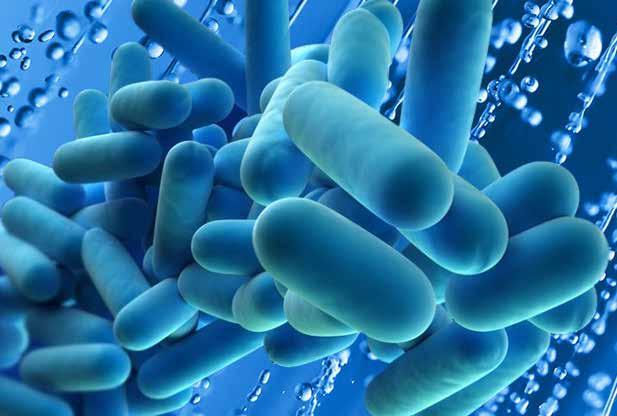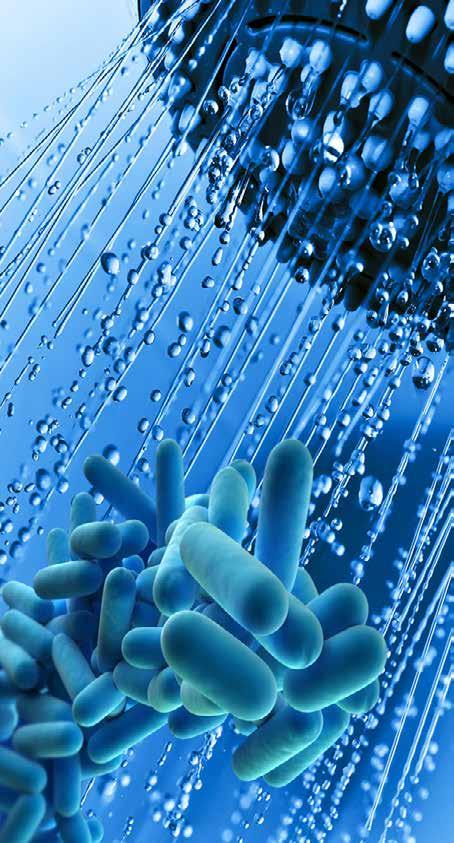
3 minute read
Preventing Legionella
We are responsible for most repairs in your home, and will ensure that your home is safe for you to live in. There are some problems which as the resident of the property you can help prevent. Legionella are a species of bacteria that cause a potentially fatal form of pneumonia, Legionnaires’ disease.

This guide explains, in general terms, what legionella is and outlines some of the simple precautions you can take to control those risks.
What is legionella?
Legionella is bacteria commonly found in natural water courses such as rivers and ponds. Since legionella bacteria are widespread in the environment, they may contaminate and grow in other water systems such as cooling towers and hot and cold water services. They survive low temperatures and can live and multiply in water temperatures between 20C and 45C, particularly if there is stagnant water and a supply of nutrients present such as rust, sludge, scale, algae and other bacteria. High temperatures of 60C and over will kill them. Legionella bacteria can cause a form of pneumonia called Legionnaires’ disease, as well as other less serious illnesses.
How do people get Legionnaires’?
People catch Legionnaires’ disease by breathing in air containing the bacteria. The bacteria is present in an aerosol that might not even be visible. These aerosols can be formed from fine droplets produced by running a tap or shower, or flushing a toilet. You can’t get Legionnaires’ disease from drinking water and it can’t be passed from one person to another.
What are the symptoms?

Everyone is potentially vulnerable to infection but some people are at higher risk. Those at higher risk include smokers and heavy drinkers, and people over 45 years of age, suffering from chronic respiratory or kidney disease or a weakened immune system. The symptoms are similar to those of flu, i.e. high temperature, fever and chills, cough, muscle pains and headache. In severe cases, there may also be pneumonia and, occasionally, diarrhoea, as well as signs of mental confusion.
Not everyone who comes into contact with legionella bacteria becomes ill.
If you suspect that you or someone in your home has contracted Legionnaires’ disease, you should contact your doctor as soon as possible. If your GP diagnoses Legionnaires’ disease, contact us immediately so that water analysis and any necessary treatment of your water system can take place.
How to reduce the risk of legionella in your home
The likelihood of legionella in your home is very low. Most households don’t store too much water and they use water regularly so it’s not standing still in pipes and tanks.
There are some simple steps you can take to help prevent the bacteria growing rapidly:
Keep your hot water cylinder thermostat set at 60C as water at this temperature will kill any legionella bacteria.
Warning: Be aware that water at this temperature may cause scalding.
Keep all shower heads and hoses free from a build-up of limescale, mould or algae growth by de-scaling every three months - or more frequently if the shower hose shows signs of blocking. Use any domestic de-scaling solution that you can buy from hardware shops (the same as you would for your iron or kettle). After de-scaling, flush the shower thoroughly and soak the shower head and/or hose in bleach, which helps sterilise and kill any bacteria.
Clean the taps in your bath, basin and sink regularly, including any spray inserts, by brushing the scale off with a nylon brush and/or wiping them with a domestic de-scaling solution (the same as the one used for shower heads). If you go on holiday or leave your property for a week or more, when you come back, flush toilets (with the lid down) and run all taps and showers continuously for approximately two minutes to flush out any bacteria. You should run the water slowly to start with to avoid spray. You can then run it faster. When you’re running the shower, you should hold the shower head directly over the plug hole.
Run garden hoses for one minute before you use them.
Keep water butts clean and don’t use them to supply a pumped device.
Make sure that lids on water tanks are tight-fitting to prevent contamination, and check that the tank insulation is properly in place.
Report any deposits such as rust or any unusual matter flowing from your taps.
Let us know if the hot water is not heating properly or if there are any other problems with the system.
For more information: The Health & Safety Executive is the government body responsible for water hygiene and Legionnaires’ disease. You can view further advice and information at their website www.hse.gov.uk/legionnaires
To report a repair please contact 01386 420800 and select the option for repairs.
Alternatively, you can report a repair online at www.rooftopgroup.org/repairs








